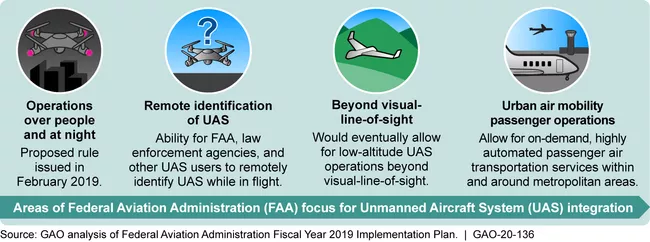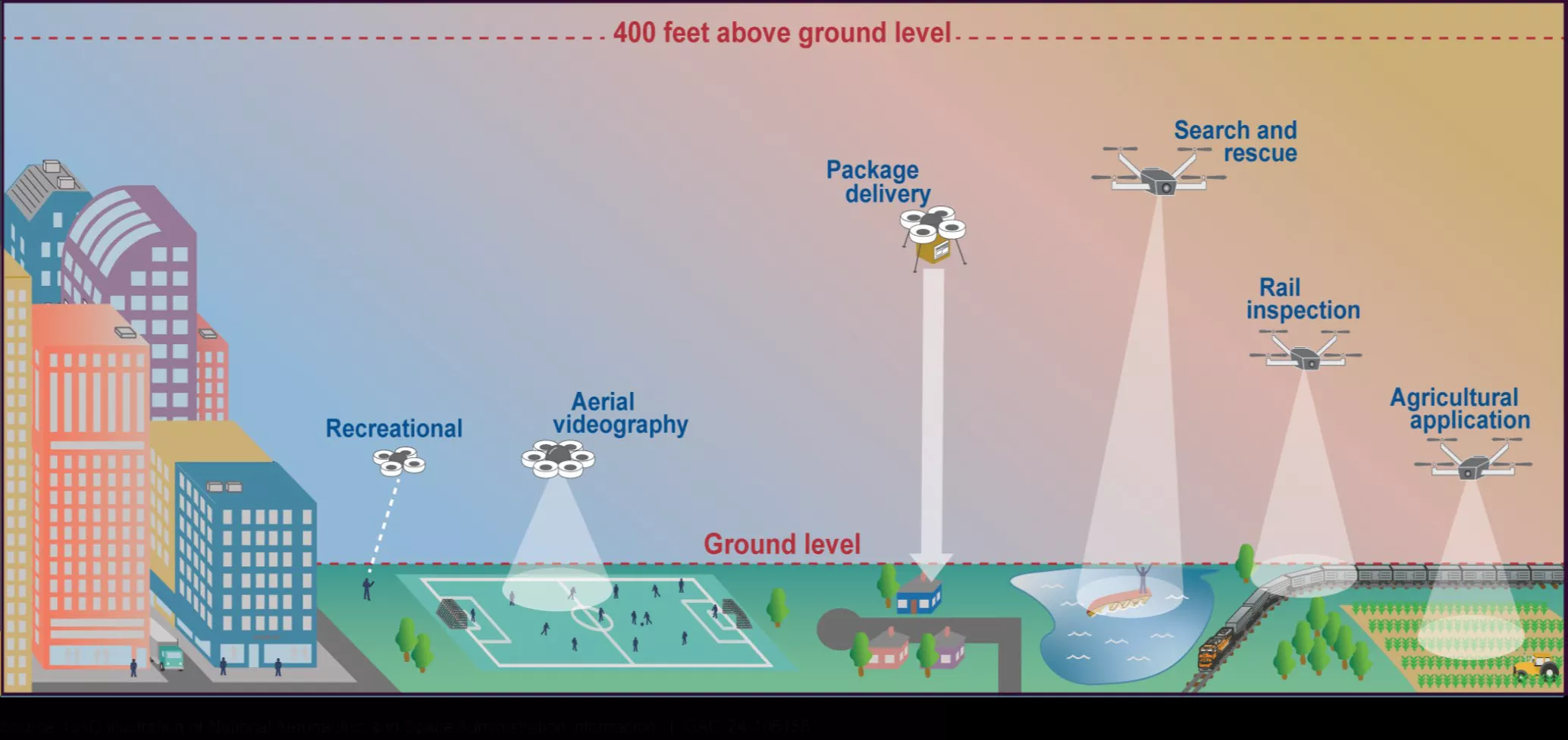Issue Summary
The emergence of drones has the potential to provide significant social and economic benefits in the United States. Drones can deliver packages, help fight fires, and provide other benefits. For example, drones were used for contactless distribution of personal protective equipment and medical supplies at hospitals during the COVID-19 pandemic. Drones also have a variety of military uses, such as supporting Department of Defense (DOD) efforts to conduct intelligence, surveillance, and reconnaissance.
Growth in drone use is expected to increase dramatically in the future. The Federal Aviation Administration (FAA) has forecasted that the commercial drone fleet (drones operated in connection with a business) will reach 955,000, and that the recreational fleet (drones operated for personal enjoyment) will number around 1.82 million by 2027. Consequently, the FAA has worked to address a number of issues to ensure that drones are safely integrated into the nation’s airspace.
For example, in January 2021, FAA issued two final rules to enable more complex drone operations. The Remote ID rule requires drones to be equipped with Remote ID technology to help FAA, law enforcement, and other federal agencies find the operator of a drone appearing to be flying in an unsafe manner or where prohibited. In addition, the Operations Over People rule allows drone operations over people, moving vehicles, and at night without a waiver or exemption, under certain conditions. FAA is also planning more rulemaking efforts, including one expected in 2024 on beyond-visual-line-of-sight operations.
FAA’s Areas of Focus for Integrating Drones
Image

However, the FAA still faces some challenges with regulating drones. For instance:
- User fees. Demands on the FAA’s staff and resources are increasing as the agency works to ensure the safety of drones. To help, the administration and Congress could set user fees to help FAA recover costs. Using available guidance could better position FAA to potentially recover drone-related costs with fees in the future.
- Drone traffic. A key effort to integrating drones into the national airspace will be the development of a drone traffic management system for drone flights at lower altitudes. The FAA is working with industry and stakeholders, including the National Aeronautics and Space Administration, to develop such a system. The agency issued an implementation plan in July 2023, but the FAA has yet to provide timelines and upcoming steps to stakeholders.
- Counter-drone technology. As the number of drones continues to grow, they can also present safety and security threats—including when flown near an airport. FAA is testing drone detection and counter-drone technologies and is required to develop a plan for their use at airports. But while FAA acknowledges the effects counter-drone technologies may have on other drone integration efforts, it doesn’t address how it will assess those effects.
Examples of Drone Uses within the National Airspace System
Image



